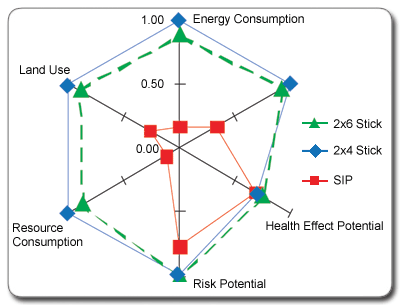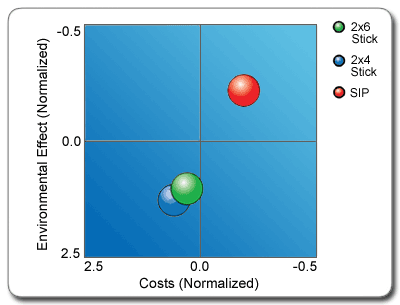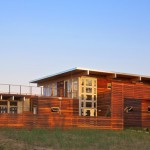SIPs are Sustainable
SIPs elevate the social, economic and environmental responsibility of homes and buildings, making a significant contribution toward true sustainability.
Made from renewable resources and 100% recyclable
SIPs are made from thick EPS foam cores sandwiched between OSB (Oriented Strand Board) panel faces. The OSB is made from fast-growing trees, and produced in a way that yields a large percentage from every tree. On our nail-base panels, the EPS foam core itself is made from partially-recycled material. Also, all PorterSIPs are 100% recyclable.
Oriented Strand Board (OSB) is manufactured from fast growing, underutilized, and often less expensive wood species grown in carefully managed forests. The OSB production process uses small wood strands and highly automated machinery, making OSB a very efficient use of raw materials.
- About 85-90 percent of a log can be used to make high quality structural panels, and the remainder – bark, saw trim, and sawdust – can be converted into energy, pulp chips or bark dust.
Expanded polystyrene (EPS) is a rigid and tough, closed-cell foam. It is usually white and made of pre-expanded polystyrene beads
- Scrap EPS generated during the manufacturing process is recycled into new EPS products.
Exceptional indoor air quality + temperature control
When compared to buildings framed with dimensional lumber, PorterSIPs cover greater surfaces with far fewer gaps in the walls and roofs, and offer home and building owners better indoor air quality, smaller HVAC system requirements, and superior indoor temperature control. PorterSIPs homes and buildings stay cooler in the summer and warmer in the winter than buildings framed with dimensional lumber. We have happy customers who are surprised time and again by how naturally temperature regulated their home or business is.
Superior R-values
R-value is a static measurement of the resistance to heat flow. PorterSIPs have consistently outperformed other methods of construction in both whole wall R-value comparison and energy efficiency. One of the best measures of energy efficiency of an entire wall assembly has been developed by Oak Ridge National Laboratory (ORNL). This testing method considers energy losses for the structural members, corners, joints and around windows, as well as, R- value of the insulation. See Full Report
Up to two-thirds less jobsite waste
Pre-fabricated SIPs allow installers to install the roof, wall and floor panels without the need to cut, frame and trim excessive amounts of lumber and other materials. This factory prefabrication of PorterSIPs can reduce the amount of jobsite material waste by quite a bit when compared to buildings constructed with regular dimensional lumber and framing materials. Less waste is better for our environment.
BASF Case Study
BASF, the world’s leading chemical company, conducted an Eco-Efficiency Analysis to compare and quantify the sustainability of similar products or processes. It provides an assessment of the economic and ecological impact over its complete life cycle. In this recent evaluation of residential insulation systems, the SIP-built structure made with EPS core and OSB skins was the clear winner over 2×4 stick construction with fiberglass batt insulation and 2×6 stick construction with fiberglass batt insulation.
Key contributors to the performance of SIPs in this study include:
- • Reduced heating and cooling loads over lifetime of home
- • High R-value
- • Low air leakage rate
- • Low environmental impact of materials
- • Low maintenance requirements
- • Lightweight materials reduce transportation fuel use
Overall ecological footprint results by insulation system 1.0 = worst position (the lower the score, the higher the eco-efficiency)

Eco-efficiency Analysis results for the construction and 60-year use of the walls and roof of 1,100-square foot, ranch-style, slab-on-grade home, located in the northeastern U.S.


